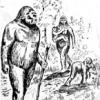Forums
-
Bigfoot Discussion
-

- 202.8k
- posts
-

- David Paulides' latest: American Sasquatch movie
- By AtlantiS,
-
- 20.5k
- posts
-

- Need Help In Central Texas.........
- By norseman,
-

- 12.9k
- posts
-

- 128.9k
- posts
-
- By Sengenjin,
-

- 20.5k
- posts
-

- By Redbone,
-
- 384
- posts
-

- By bipedalist,
-

- 324
- posts
-
- International 1952 - Swiss Team After Abominal Snow Man
- By Trogluddite,
-

- 10.1k
- posts
-

- 1k
- posts
-
- 15
- posts
-

- Decent Buck
- By norseman,
-
-
Welcome to The Bigfoot Forums
-

- 3.2k
- posts
-
- New Member Introductions
- By healthyoctopus,
-
- 3
- posts
-

- Community Rules and Guidelines
- By gigantor,
-
- 11
- posts
-

- Welcome Our New Director!
- By joebeelart,
-
-
BFF Library
-

- 56
- posts
-

- 29
- posts
-

- Not a Yeti? John Napier, Lawrence Swan, And The Footprint That Made Shipton Famous
- By Patterson-Gimlin,
-

- 66
- posts
-

- 25
- posts
-

- By Catmandoo,
-
- 491
- posts
-
- Pennsylvania 1921 - Gorilla Keeps on the Sunnyside
- By Trogluddite,
-
- 50
- posts
-
-
The Tar Pit
-

- 85.1k
- posts
-

- By Incorrigible1,
-

- 25.3k
- posts
-

- By VAfooter,
-

- 900
- posts
-

- By Huntster,
-




